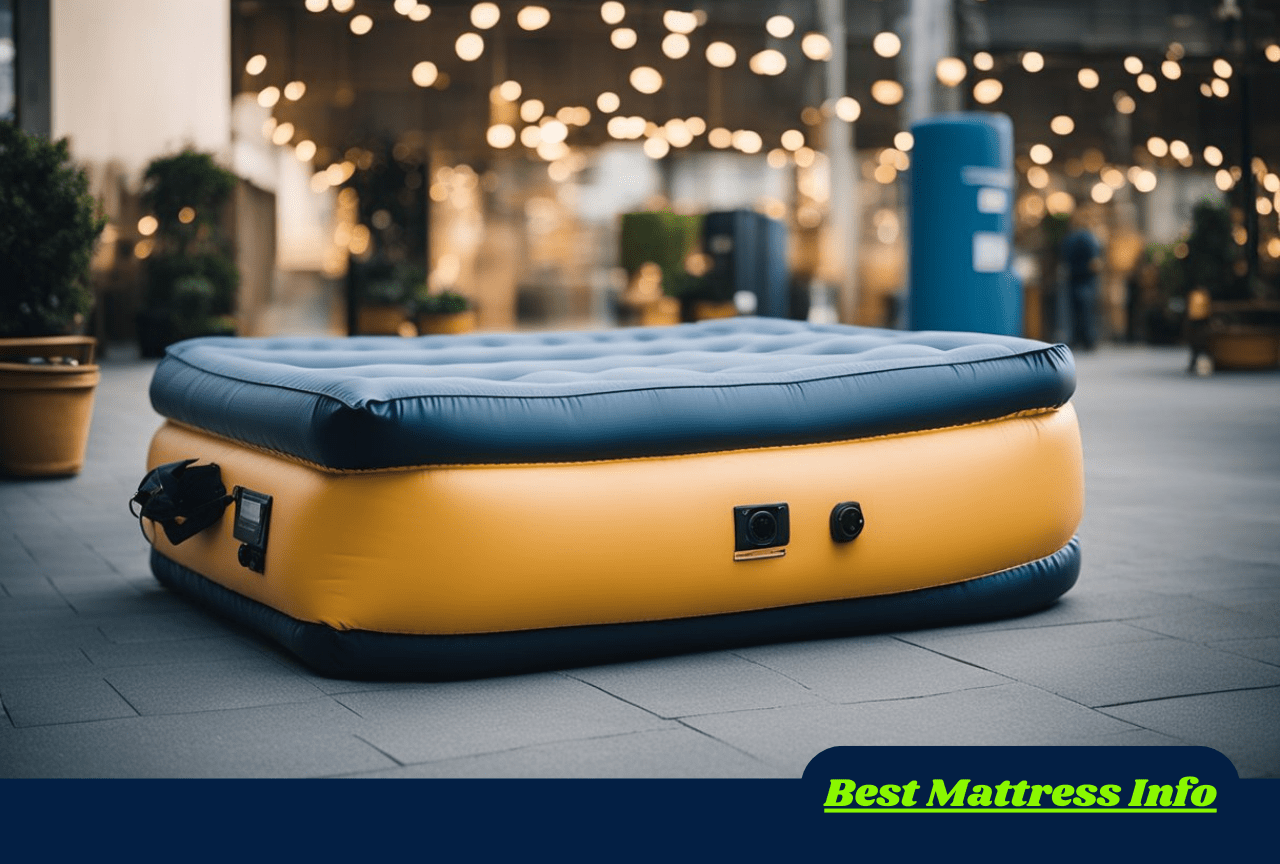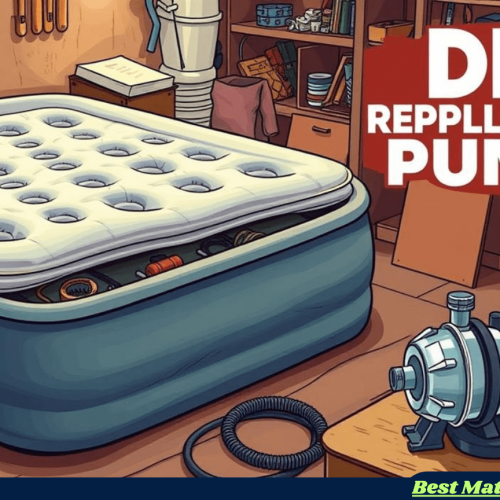Table of Contents
ToggleLow-Pressure Alarm: Essential Guide for Users
Understanding and managing the low-pressure alarm on a Drive air mattress system is crucial for ensuring patient safety and comfort. This alarm acts as a vital alert mechanism, notifying caregivers of any issues with air pressure that may affect the mattress’s therapeutic benefits. Low air pressure can compromise the mattress’s ability to prevent and treat pressure ulcers effectively, making immediate response essential.
Common reasons for the low-pressure alarm activation include leaks in the air cells, disconnection of air tubes, or malfunctioning control units. Regular maintenance and prompt troubleshooting can help you address these issues swiftly, ensuring the mattress performs optimally. Knowing how to operate the mattress system and respond to these alarms will provide peace of mind and a more reliable therapeutic experience for those relying on it.
Key Takeaways
- Low-pressure alarms are critical for patient safety and comfort.
- Common causes include air leaks and disconnections.
- Prompt troubleshooting and regular maintenance ensure optimal performance.
Understanding the Drive Air Mattress Low-Pressure Alarm

The Drive Air Mattress Low-Pressure Alarm ensures patient safety by indicating insufficient pressure within the mattress. This function is crucial for maintaining comfort and preventing pressure ulcers.
Function of the Low-Pressure Alarm
The low-pressure alarm on a Drive Air Mattress is designed to alert you when the mattress can’t maintain the necessary pressure levels. This ensures that the alternating pressure and low air loss features operate correctly to prevent and treat pressure sores.
The alarm emits an audible sound and may also include a visual indicator to grab your attention immediately. It would help if you took action as soon as the alarm sounds to restore proper pressure levels and ensure patient safety.
Components Involved
Several components collaborate to make the low-pressure alarm functional. The control unit manages the air pressure and houses the alarm system. Sensors embedded within the mattress measure the pressure and detect when it falls below the required threshold.
The audible and visual alarm components are crucial for alerting you. The alarm reset button allows you to mute the sound temporarily while addressing the issue. Familiarize yourself with these parts to troubleshoot quickly when the alarm activates.
Alarm Thresholds
The specific threshold for the low-pressure alarm varies depending on the mattress model you use. Typically, the alarm triggers if the mattress cannot maintain adequate pressure within a specified time frame. For example, the Med-Aire Essential 8 triggers the alarm if low pressure persists for 40 minutes.
Understanding these thresholds is vital for effective mattress operation. Be sure to advice the specific user manual for your mattress model to know the exact limits and ensure you take timely action when the alarm sounds.
Common Reasons for Low-Pressure Alarms
Low pressure alarms on a Drive air mattress can arise due to several issues such as air leaks and power failures. Understanding these factors helps in maintaining the mattress and ensuring optimal functionality.
Air Leaks
Air leaks are a primary cause of low-pressure alarms in air mattresses. These leaks can occur from punctures, splits, or damage to the mattress material. To identify a leak, fully inflate the bed and listen for escaping air. Another method involves using soapy water on the mattress surface and inspecting for bubbles.
Once located, you should use a repair kit designed for air mattresses to patch the leak. Follow the manufacturer’s instructions anxiouslyto ensure a proper seal. Regularly checking for and sealing leaks can extend the lifespan of your air mattress.
Power Failures
Power failures can trigger low-pressure alarms. Without a consistent power supply, the mattress cannot maintain the necessary air pressure. Check the power cord and connections to make sure they are secure and in good condition. Also, ensure that the outlet is functioning correctly.
If the power supply is interrupted, the control unit may need to be reset. This often involves unplugging and replugging the unit or following specific reset instructions provided by your mattress’s manufacturer. Having a backup power solution, like a battery pack, can prevent pressure loss during outages.
Pressure Adjustments
Incorrect pressure settings can cause alarms. Each user might require different pressure levels based on their weight and medical needs. Consult the user manual to set the appropriate pressure for your situation.
The control unit typically allows for automatic or manual adjustments. Regularly check the settings to make sure the mattress maintains the recommended pressure levels. Monitor the comfort and support of the bed to determine if adjustments are needed.
Equipment Malfunction
Mechanical issues with the air pump or control unit can lead to low-pressure alarms. Components like the compressor or valves might fail, affecting the mattress’s ability to maintain pressure. Regular maintenance and check of the equipment can help identify and fix these issues early.
If you suspect a malfunction, refer to the troubleshooting section of the user manual. Typical steps include checking connections, ensuring the pump is operational, and listening for unusual noises. In some cases, expert repair or replacement of parts may be necessary to resolve ongoing problems.
By addressing air leaks, power failures, pressure adjustments, and equipment malfunctions, you can effectively manage and prevent low-pressure alarms. For detailed guidance, visit Drive Air Mattress Low-Pressure Alarm for comprehensive support.
Operating the Drive Air Mattress

Proper operation of the Drive Air Mattress ensures patient comfort and system efficiency. This guide details the initial setup, pressure adjustments, routine maintenance, and troubleshooting steps for optimal performance.
Initial Setup
First, remove the mattress from its box and put it on the bed frame. Use the straps to keep it in place so it doesn’t move. Then, connect the air pump to the mattress with the tubing.
Make sure all connections are secure to prevent air leaks.
Next, plug the pump’s power cord into an outlet. Turn on the pump to start inflating the mattress. Please wait until it’s fully inflated before adding bedding or placing someone on it.
Check the pressure settings to make sure they’re right for the patient.
Adjusting Pressure Settings
To adjust the pressure settings, use the control panel on the air pump. The panel typically has options for increasing or decreasing firmness based on the patient’s weight and medical requirements.
Press the “increase” or “decrease” buttons to set the desired pressure level. Monitor the pressure readings to make sure the mattress maintains consistent pressure. For alternating pressure systems, activate the alternating mode which will periodically adjust pressure to improve patient comfort and prevent bed sores.
Regular Maintenance
Regular preservation is crucial for the longevity and
show of your Drive Air Mattress. Clean the mattress using a soft cloth and mild detergent to delet any dirt or spills. Avoid soaking the mattress or using harsh chemicals.
Inspect the mattress for signs of wear or damage. Check the air tubing and connections for leaks. Regularly clean the pump’s air filter to ensure optimal airflow. Make these checks part of your routine to keep the mattress in good condition.
Troubleshooting
If the low-pressure alarm sounds, check all connections to ensure the air tubing is securely attached. Please verify that the pump is operating correctly and that it’s plugged into a working electrical outlet.
Examine the mattress for any punctures or holes that could cause air leaks. If the mattress doesn’t inflate properly, consider resetting the pump or manually checking for air blockages. Advice the user manual for additional troubleshooting tips specific to your mattress model.
Responding to the Low-Pressure Alarm
When the low-pressure alarm on your Drive air mattress sounds, it’s essential to act promptly to ensure user safety and comfort. This section outlines immediate steps for silencing the alarm, evaluating the mattress’s condition, and contacting technical support for further assistance.
Immediate Steps
First, press the Alarm Reset button to mute the audible alarm. This prevents the noise from causing further discomfort or stress.
Next, visually inspect the mattress to confirm inflation levels and check for any visible kinks or obstructions in the tubing. Ensure the power supply to the control unit is stable. Reconnect any loose plugs or hoses and allow the mattress a few minutes to reinflate.
If the alarm persists after these checks, your mattress might need to maintain proper pressure. Turn off the system, carefully remove the user from the mattress if it is safe to do so, and consider switching to an alternate support surface until the issue is resolved.
Assessing the Mattress Condition
Begin by examining the mattress surface for any signs of wear, damage, or holes which might lead to pressure loss. Look for separations at the seams or any punctures.
Next, evaluate the control unit. Ensure it is set to the correct mode—either Alternating Pressure or Static Mode—and verify that all settings are appropriate for the user’s needs. The control unit is a key component, and it is crucial to ensure it operates correctly.
Inspect the tubing thoroughly. Any bends or kinks can restrict airflow and cause a low-pressure alert. Straighten the tubes and ensure they are securely connected to both the mattress and the control unit.
When to Contact Technical Support
If the steps above do not resolve the alarm, it is time to contact technical support. Prepare relevant information, such as the mattress model number and details about any troubleshooting you’ve already conducted.
Technical issues requiring intervention may include persistent low pressure despite proper setup, recurrent alarms, or visible damage to the mattress or control unit. Contacting support is necessary if these problems are noticed, as they might indicate a need for part replacement or professional repair.
Have your warranty information ready. Products like the Drive Med Aire series typically come with a warranty of up to 18 months for the control unit and mattress. This can be useful when discussing potential solutions or replacements with support staff.
Preventive Measures for Alarm Prevention

Drive Air Mattress Low Pressure Alarms
Preventing the low-pressure alarm on your Drive air mattress involves proper installation, regular monitoring, and scheduled maintenance. By addressing these key
district, you can ensure optimal functionality and patient comfort.
Proper Installation
Ensure the mattress system is set up correctly according to the manufacturer’s instructions. Improper installation can lead to ineffective pressure distribution and an increased risk of low-pressure alarms.
Place the mattress on a flat, supportive surface. Connect the control unit and ensure the hoses are securely attached to prevent air leaks. Verify the power supply is stable and uninterrupted to avoid malfunctions.
Calibration is essential. Adjust settings based on patient weight and specific needs. This ensures your mattress provides the correct pressure levels, reducing the likelihood of low-pressure alarms.
Regular Monitoring
Monitor the mattress system consistently. Daily checks can help identify potential issues before they escalate.
Check for any visible damage to the mattress or control unit. Inspect hoses for kinks or blockages, as these can impede airflow. Listen for unusual noises from the control unit, which may indicate a problem.
Routine observation allows you to address minor issues promptly. Testing the alarm system periodically confirms that it is functioning correctly. Accurate monitoring helps maintain optimal mattress performance and patient comfort.
Scheduled Maintenance
Scheduled maintenance is crucial for sustaining the mattress system’s efficacy. Follow the manufacturer’s maintenance schedule rigorously.
Clean the mattress and control unit regularly to prevent dirt and debris buildup. Replace any worn or
injure components, such as valves or filters, to maintain air pressure integrity.
Check and calibrate the control unit periodically. Regular professional inspections can ensure all parts are working as intended. Adhering to a maintenance schedule minimizes the risk of unexpected alarms and prolongs the system’s lifespan.
Technical Specifications of Drive Air Mattresses
Drive air mattresses are equipped with advanced features designed to ensure user comfort and safety, primarily through precise pressure management and built-in alarms.
Pressure Range
The Drive air mattresses offer a versatile pressure range to accommodate various patient needs. Typically, these mattresses can be adjusted to support different weights and pressure levels.
Some models, such as the Med-Aire Melody, feature adjustable patient weight settings. This allows for precise customization, whether the setting is at home or in long-term care facilities. Managing the pressure correctly is essential to prevent and treat pressure ulcers effectively.
Alarm Volume
Alarm volume is a critical component to ensure timely alerts when pressure drops below optimal levels.
Many models, such as the Med-Aire 8, come with audio and visual alarms. These alarms alert caregivers to address issues promptly. In low-pressure situations, you can often mute the audible alarm by pressing the reset button while the visual indicator continues to flash as a reminder.
Durability Features
Drive air mattresses incorporate durability features to ensure longevity and withstand continuous use.
For instance, materials like medical-grade PVC or nylon are commonly used for their strength and ease of cleaning. The mattress designs usually support high weight capacities; for example, the Drive Med Aire 8 Inch can support up to 450 pounds. Moreover, alternate pressure settings help in minimizing wear and tear over time, promoting a longer mattress lifespan and ensuring consistent performance.
Selecting the Right Drive Air Mattress
Choosing the right Drive air mattress involves evaluating patient-specific needs, ensuring the mattress fits the intended bed, and considering budget constraints. Each of these component plays a critical role in achieving optimal comfort and therapeutic outcomes.
Considerations for Different Patient Needs
Evaluate the patient’s mobility, weight, and health conditions. For patients with limited mobility or chronic pain, a mattress with alternating pressure and low air loss features can be beneficial.
Look for features like a rotational mechanism if the patient is bedridden, as this helps reduce pressure sores. Understanding whether the patient has a tendency for specific issues, such as bed sores or respiratory problems, can guide the features you prioritize in the mattress.
Sizing and Fit
Ensure the mattress dimensions are compatible with the bed frame. Measure both the bed and the potential mattress to prevent sizing issues. For example, the Invacare MicroAir MA1000 offers an 80″ x 36″ fit with a 10″ height.
Check if the mattress can efficiently support the patient’s weight. Consider models that offer customizable cycle times for greater comfort and pressure relief without compromising on fit.
Budget and Cost
Compare prices of different models while balancing the need for essential features. Though some options are more affordable, ensure they meet the necessary quality and therapeutic criteria.
Review the long-term investment benefits, like extended warranties or durable materials, which can offset initial costs. For instance, the Med-Aire 8″ is an example of a system with essential features that provide good value.
Installation and User Training
Proper installation and user training of the Drive Air Mattress low-pressure alarm system are crucial for its effective operation and user safety. Below are guidelines offered in installation guides, detailed instructions found in user manuals, and the importance of provider training programs.
Installation Guides
Installation of the Drive Air Mattress low-pressure alarm system requires precise steps to ensure functionality and safety, which begin by unpacking the unit and inspecting all components. Follow these steps:
- Position the Mattress: Lay the mattress on a flat surface and attach it securely to the bed frame using the provided straps.
- Connect the Pump: Attach the air pump to the mattress through the designated air hoses, ensuring the connections are tight to prevent air leaks.
- Power the Unit: Plug the air pump into a grounded electrical outlet and ensure it is positioned to avoid any potential tripping hazards.
- Calibration: Turn on the pump and allow the system to inflate, then adjust settings to achieve the desired pressure.
Refer to the user manual for complete diagrams and troubleshooting tips.
User Manuals
User manuals provide comprehensive instructions on the operation and maintenance of the Drive Air Mattress system. These manuals outline how to use the control panel, adjust pressure settings, and respond to low-pressure alarms. Essential sections include:
- Setup and Initial Use: Step-by-step instructions for first-time setup.
- Operating Controls: Information on navigating the control panel, setting the desired pressure, and activating/deactivating features.
- Emergency Procedures: This section highlights instructions on what to do if the low-pressure alarm sounds, including how to press the Alarm Reset button to temporarily mute the alarm.
- Maintenance and Care: Guidelines for cleaning the mattress and pump, along with recommended maintenance schedules.
Having a user manual on hand ensures you can operate the system efficiently.
Provider Training Programs
Providers must undergo training to ensure they understand how to install, operate, and troubleshoot the Drive Air Mattress system. Training programs typically include:
- Hands-on Demonstrations: Real-time installation and operation demonstrations, allowing providers to handle the equipment and ask questions.
- Instructional Videos: Visual guides that walk through every step of the installation and daily use processes.
- Troubleshooting Workshops: Sessions focused on everyday issues, such as low-pressure alarms and practical solutions.
- Certification Courses: Comprehensive courses often conclude with certification, verifying that providers are proficient in using and maintaining the system.
By participating in these training programs, providers can ensure the safety and help of individuals using the Drive Air Mattress system.
Compliance and Safety Standards
When choosing a drive air mattress with a low-pressure alarm, it is crucial to consider its compliance with established safety standards and certifications. This ensures reliability and effectiveness in preventing and treating pressure ulcers.
Regulatory Agencies
Drive air mattresses must comply with regulations set forth by significant health and safety agencies. In the United States, the Food and-Drug Administration (FDA) manage medical devices under stringent guidelines to ensure patient safety. Any drive air mattress you choose must have FDA approval, signifying that it meets essential safety standards.
Other significant regulatory bodies include Health Canada and the European Medicines Agency (EMA). These agencies have their own sets of rules to ensure that medical devices, including air mattresses, are safe and effective.
Safety Certifications
Safety certifications from recognized organizations add another layer of credibility. Look for mattresses that have UL (Underwriters Laboratories) or CE (Conformité Européenne) markings. These certifications show that the product has undergone careful testing and complies with high safety standards.
Products with ISO (International Organization for Standardization) certification ensure quality management and process efficiency. An ISO 13485 certification deals explicitly with the manufacturing standards of medical devices, ensuring that your chosen mattress adheres to quality and safety protocols.
Recommended Practices
Regular maintenance and routine checks are recommended to keep your drive air mattress in optimal condition. To avoid contamination, follow manufacturer guidelines for cleaning and disinfecting the mattress. Ensure that the low-pressure alarm is functional by performing periodic tests as indicated in the user manual.
Placement of the mattress should also follow guidelines to prevent obstructions to airflow. Overloading the mattress beyond its weight capacity can compromise its efficacy. Adhering to these recommended practices ensures not only the longevity of the mattress but also the safety and comfort of the patient.
By paying close attention to these factors, you enhance both the compliance and safety of using a drive air mattress with a low-pressure alarm.
Warranty and Support Information
This section details the warranty coverage, how to claim warranty service and available customer support channels for Drive Air Mattress systems.
Warranty Coverage
The Drive Air Mattresses come with a manufacturer’s warranty that typically covers weakness in materials and artistry for a specified period, usually between one to two years. Some models offer extended warranty options. This warranty does not cover injure resulting from misuse, accidents, or unauthorized repairs.
Coverage generally includes the mattress system, pump, and any accompanying accessories. Always check your specific product manual for detailed terms and conditions. Keeping your purchase receipt and registering your product online can help ensure smooth warranty claims.
Claiming Warranty Service
To claim warranty service, you should first contact the retailer where you purchased your Drive Air Mattress. They can guide you through the first steps and determine if the issue falls under warranty coverage.
If the retailer cannot resolve the issue, contact Drive DeVilbiss Healthcare directly. They may request proof of purchase, a description of the problem, and possibly pictures or videos. Upon confirmation, you may need to ship the product for repair or replacement. Follow their instructions for packaging and shipping.
Customer Support Channels
Customers can access support through multiple channels. The official Drive DeVilbiss Healthcare website provides resources such as manuals, FAQs, and troubleshooting guides.
You can also extend customer service via phone for real-time assistance. Email support is available, allowing you to send detailed queries and receive responses in writing. Additionally, some retailers offer support through their own helplines. Always use authorized channels to ensure you receive accurate information and assistance.
Frequently Asked Questions about Drive Air Mattress
Addressing common issues like troubleshooting alarms, finding setup instructions, and adjusting settings can ensure your Drive air mattress operates smoothly. Here’s what you need to know.
How can I troubleshoot a low-pressure alarm on a Drive air mattress?
To troubleshoot a low-pressure alarm, first check all air connections for leaks or disconnections. Then, ensure the mattress is fully inflated, and the power supply is working correctly. If the issue continues, press the Alarm Reset button to mute the audible alarm, as mentioned in this user manual.
Where can I find instructions for setting up my Drive air mattress?
Setup instructions are typically found in the user manual that comes with your mattress. If you don’t have one, you can usually download it online. For instance, detailed instructions for the Drive Med Aire Plus series can be found here.
Is there an online manual for the Drive air mattress model 14027?
Yes, there is an online manual available for the Drive air mattress model 14027. You can access it here.
What steps should I follow if my Drive air mattress pump 14027 is not working correctly?
If your Drive air mattress pump isn’t functioning, first check the power supply and connections. Ensure the pump is plugged in securely and there are no obstructions. For further assistance, consult the troubleshooting section of the user’s manual or contact customer service.
How do I adjust the settings on a drive-low air-loss mattress for optimal comfort?
Adjust the settings using the power panel on the mattress pump. Select the desired firmness level based on patient comfort and therapy needs. Refer to the specific settings instructions in the user manual for guidance on achieving optimal comfort.
Can I use the Drive air mattress in static mode on a hospital bed?
Yes, the Drive air mattress can be used in static mode on a hospital bed. This feature allows for a stable sleeping surface when consonant alternation is not required. Ensure your hospital bed is compatible with the mattress dimensions and weight requirements.










